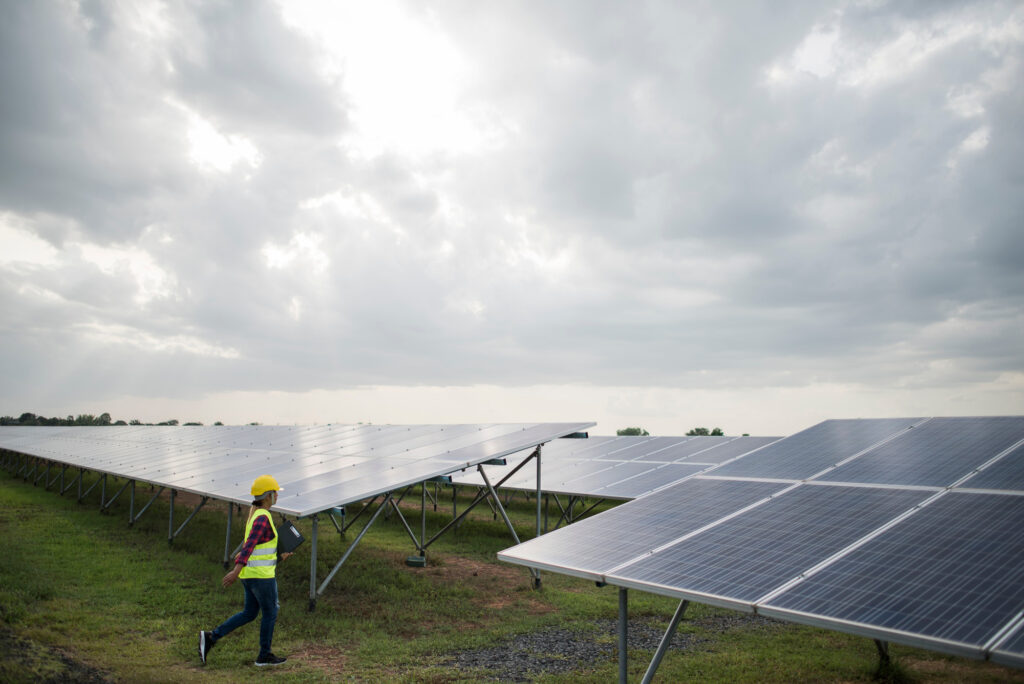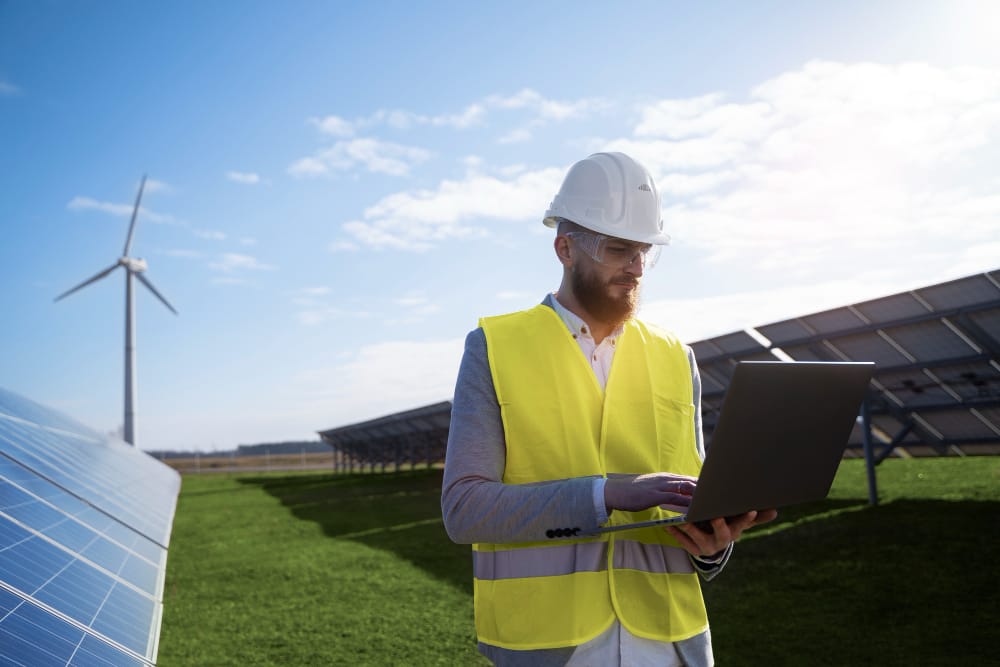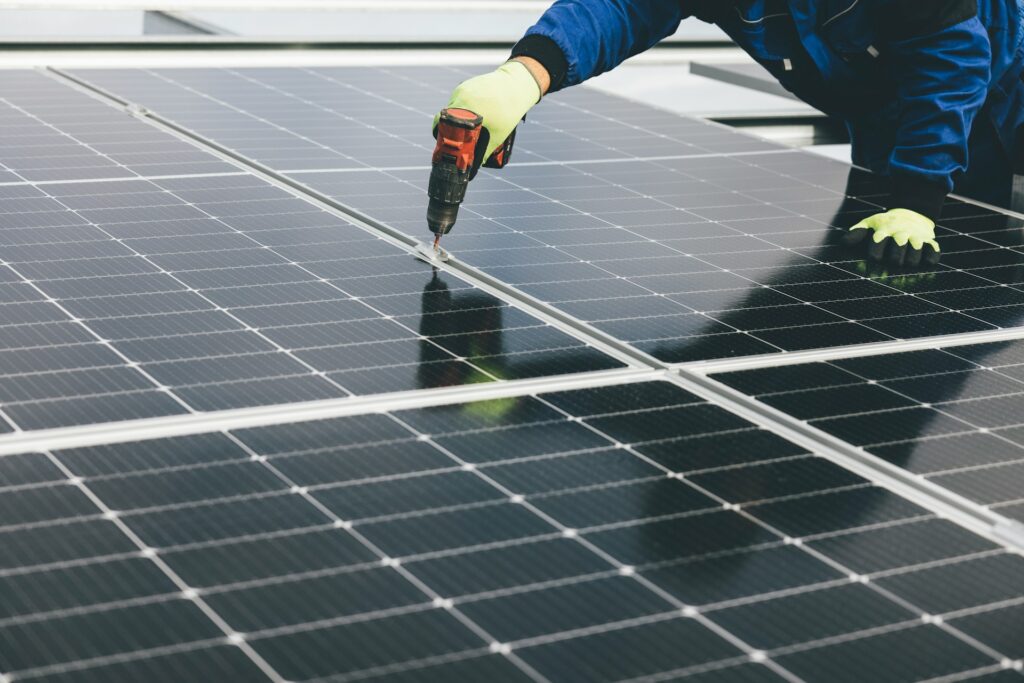Commercial solar panels are photovoltaic (PV) panels designed for use in commercial buildings, such as office buildings, warehouses, and factories. They are used to generate electricity from the sun’s energy, which can be used to power a variety of electrical systems and appliances in the building.
Commercial solar panels are typically larger and more powerful than residential solar panels, as they are designed to meet the energy needs of larger buildings and facilities. They are typically installed on the roof or the ground near the building and are connected to the building’s electrical system through a solar inverter.
Solar Energy Is a Gentle Friend of the Environment
There are several benefits to using items fueled by solar energy, including cost savings on energy bills, reduced reliance on fossil fuels, and a lower environmental impact. Commercial solar panels can also help businesses meet their sustainability goals and potentially qualify for government incentives and tax credits.
Solar panels are an environmentally friendly source of electricity because they generate electricity from the sun’s energy, which is a clean and renewable resource. Solar panels do not emit any greenhouse gases or other pollutants during the electricity generation process, which makes them a much cleaner alternative to fossil fuels like coal and natural gas.
In addition to their environmental benefits, solar panels can also contribute to energy independence and security. By generating electricity locally, solar panels can help reduce the need for electricity from centralized power plants and the transmission of electricity over long distances. This can reduce the risk of power outages and improve the resilience of the electricity grid.
Overall, the use of solar panels can help reduce the negative environmental impacts of electricity generation and contribute to a more sustainable energy future.
Solar Powered Jobs
Solar panels can also have a positive impact on the local community by creating jobs and economic opportunities. The installation and maintenance of solar panels require skilled workers, including electricians, roofers, and engineers. As more businesses and individuals adopt solar technology, there is a growing demand for these professionals to design, install, and maintain solar panel systems.
In addition, the manufacturing of solar panels and related equipment also requires a workforce, from assembly line workers to engineers and managers. As the demand for solar panels increases, so does the demand for workers in the manufacturing sector.
The growth of the solar industry has also led to the creation of indirect jobs in areas such as sales, marketing, and finance. As solar technology becomes more widespread, there is a need for individuals to promote and sell solar products, as well as to provide financial and technical support to customers.
Overall, the use of solar panels can contribute to job growth and economic development in a community or region by providing employment opportunities in a variety of fields.
Commercial Solar Panels Are Future Investments
The cost of commercial solar panels can vary widely depending on several factors, including the size and complexity of the installation, the type and quality of the panels and related equipment, and the location of the project.
On average, the cost of commercial solar panels can range from $2 to $4 per watt of installed capacity. For a typical commercial installation, this can translate to a total cost of $40,000 to $100,000 or more. These commercial solar panel costs can appear a bit heavy initially, but in the long run, they give back generously to the environment. Many businesses and organizations see a return on investment within a few years through reduced energy bills and can continue to save money on energy costs for the life of the solar panel system, which is typically 25-30 years. It’s worth noting that the upfront cost of commercial solar panels is often offset by long-term energy savings.
There are also a variety of financial incentives and tax credits available to help offset the cost of commercial solar panels. These may include federal and state tax credits, grants, and loan programs. These can help to make the initial investment more affordable and accelerate the return on investment. It’s worth researching these options to see if they may be available to help reduce the cost of a commercial solar panel installation.
Solar Panels for Commercial Buildings
Solar panels are a popular choice for commercial buildings, as they provide a clean and renewable source of electricity that can significantly reduce energy costs and improve sustainability.
Solar panels for commercial buildings are typically larger and more powerful than residential solar panels, as they are designed to meet the energy needs of larger buildings and facilities. They are installed on the roof or on the ground near the building and are connected to the building’s electrical system through a solar inverter.
There are several factors to consider when installing solar panels in a commercial building, including the size and orientation of the building, the available space for the panels, and the local climate and weather conditions. It’s also important to consider the type and quality of the panels and related equipment, as well as the cost of the installation and any potential maintenance or repair needs.
How Many Types Of Commercial Solar Panels Are There?
Several types of solar panels are commonly used in commercial buildings, including:
Monocrystalline solar panels: These are made from a single crystal of silicon and are known for their high efficiency and long lifespan. They are also relatively small and sleek in appearance, making them a popular choice for rooftops.
Polycrystalline solar panels: These are made from multiple crystals of silicon and are slightly less efficient than monocrystalline panels. They are also slightly larger and less expensive, making them a good choice for larger installations.
Thin-film solar panels: These are made from a thin layer of photovoltaic material and are generally less efficient than crystalline panels. They are also more flexible and lightweight, which makes them well-suited for use on curved or irregular surfaces.
Hybrid solar panels: These combine different types of solar panels, such as crystalline and thin-film, to optimize performance and efficiency.
It’s worth noting that the type of solar panel that is best suited for a commercial building will depend on a variety of factors, including the size and orientation of the building, the available space for the panels, and the local climate and weather conditions. It’s important to work with a qualified solar panel provider to determine the most appropriate type of panel for your specific needs.
Commercial Solar Panels Benefits
The pros:
Solar panels in commercial buildings can provide cost savings and can significantly reduce energy costs for businesses by generating electricity onsite. This can result in a lower energy bill and a quicker return on investment. They are a clean and renewable source of energy, and using them can help businesses reduce their carbon footprint and meet sustainability goals. They can also provide a reliable source of electricity, even during power outages or other disruptions.
Solar panels have a lifespan of 25-30 years, which means they can continue to generate electricity and provide cost savings for a long time. It’s worth noting that the potential financial benefits of commercial solar panels can vary depending on several factors, including the size and complexity of the installation, the type and quality of the panels and related equipment, and the location of the project. It’s important to carefully assess these factors and work with a qualified solar panel provider to determine the most appropriate and cost-effective solution for your business.
Solar panels can increase the value of a commercial property by making it more energy-efficient and attractive to potential buyers or tenants. Many governments offer financial incentives and tax credits to encourage the use of solar panels in commercial buildings. Using solar panels can improve a business’s public image and reputation as an environmentally responsible company.
The cons:
There are a few potential drawbacks to using solar panels in commercial buildings while the long-term cost savings of solar panels can be significant, the upfront cost of installation can be a barrier for some businesses.
Solar panels require regular maintenance to ensure they are functioning properly and efficiently. This can include cleaning the panels, replacing inverters and other components, and monitoring the system for any issues.
Solar panels rely on sunlight to generate electricity, which means that their performance can be reduced in areas with limited sunlight, such as during the winter months or monsoons in cloudy or overcast conditions. They require a significantly large area of space for installation, which may be a challenge for buildings with limited roof or ground space.
These systems must be connected to the local electricity grid, and this process can sometimes be complex and time-consuming. It’s important to work with a qualified solar panel provider to ensure a smooth interconnection process to avoid any mistakes.
While there are some potential drawbacks to using solar panels in commercial buildings, overall, their use can provide significant benefits in terms of long-term cost savings, sustainability, and reliability, as well as potential financial incentives and improved public image. The pros outweigh the cons and hence they are easily the best choice for commercial use.






